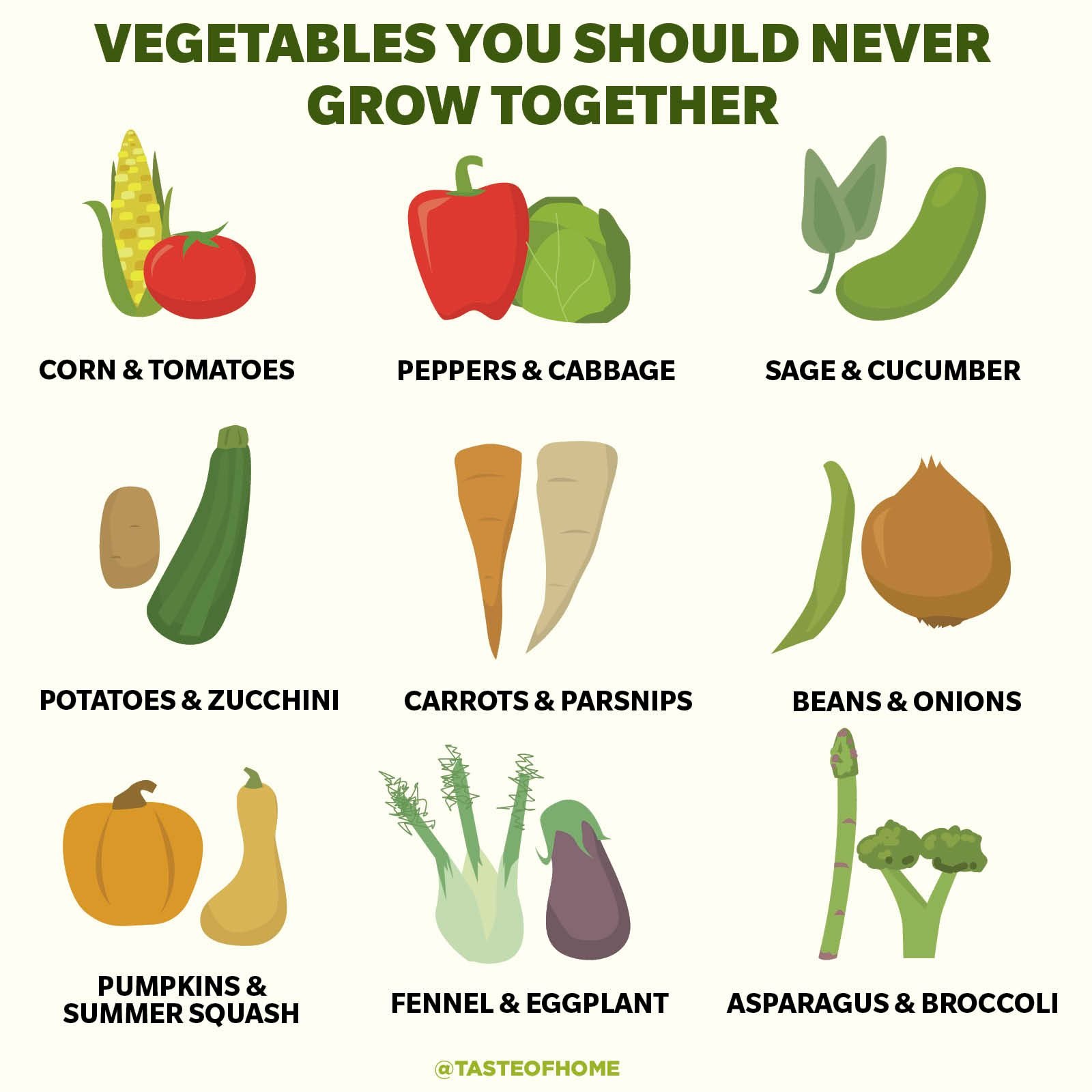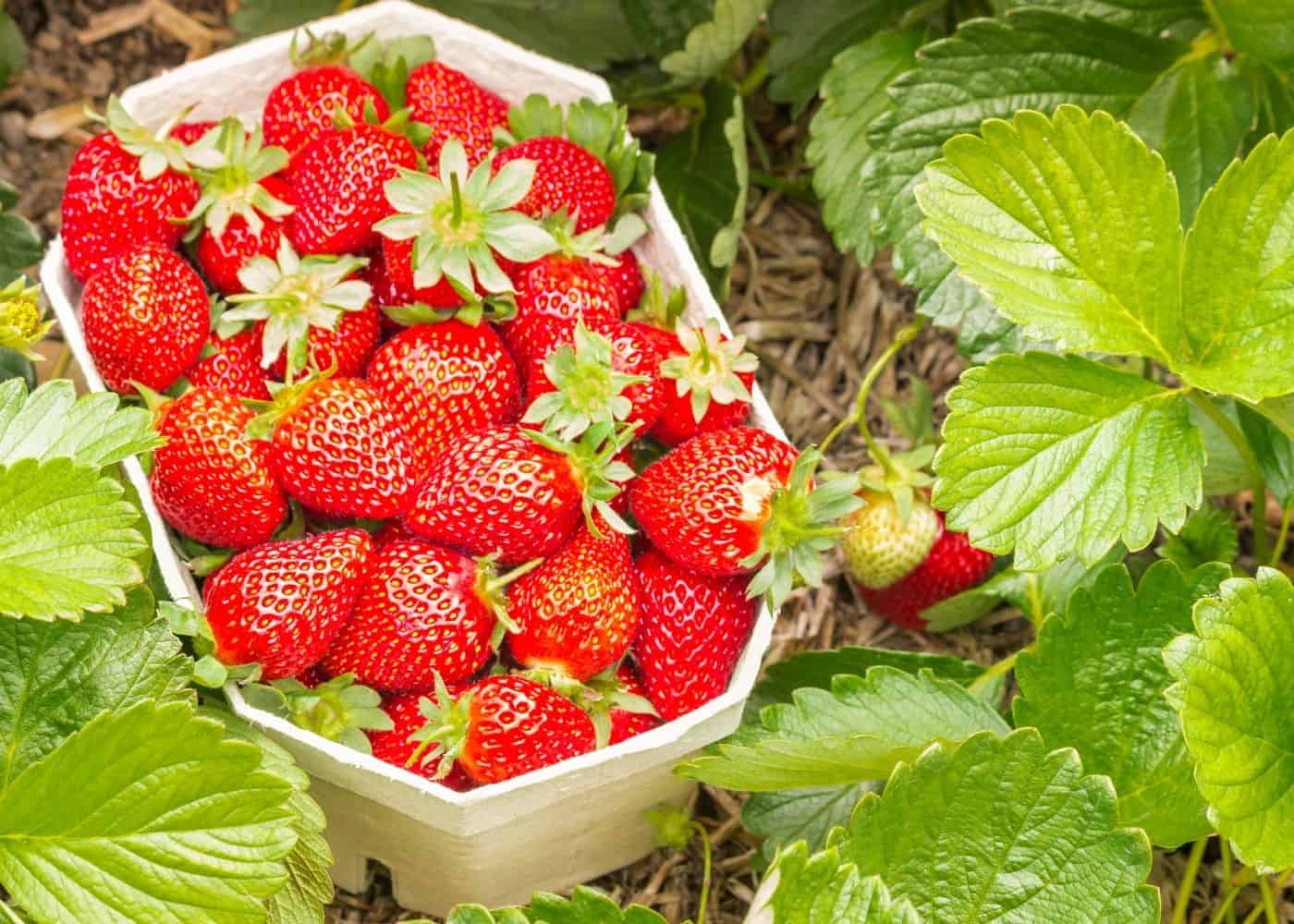Plants You Should Never Grow Next To Each Other
Plants You Should Never Grow Next to Each Other
When planning your garden, it's important to consider which plants will grow well together. Some plants can actually stunt the growth of others, or attract pests and diseases. By avoiding planting incompatible plants next to each other, you can improve your chances of a successful harvest.
Here are some of the most common plants that you should never grow next to each other:
- Asparagus and alliums (garlic, onions, and chives). Alliums release chemicals that can inhibit the growth of asparagus.
- Beans and brassicas (cabbage, broccoli, cauliflower, and Brussels sprouts). Beans and brassicas compete for the same nutrients, so planting them together can lead to nutrient deficiencies.
- Carrots and dill. Dill can inhibit the growth of carrots.
- Corn and tomatoes. Corn and tomatoes are both heavy feeders, so planting them together can lead to competition for nutrients. Additionally, corn and tomatoes can attract the same pests and diseases.
- Eggplant and potatoes. Eggplant and potatoes are both in the nightshade family, and they are susceptible to the same diseases. Planting them together can increase the risk of disease transmission.
- Fennel and kohlrabi. Fennel produces chemicals that can stunt the growth of kohlrabi.
- Marigolds and tomatoes. Marigolds can repel pests that are attracted to tomatoes, such as whiteflies and nematodes. However, marigolds can also inhibit the growth of tomatoes.
- Peas and onions. Onions can stunt the growth of peas.
- Potatoes and sunflowers. Sunflowers can shade out potatoes, stunting their growth.
In addition to these common pairings, there are many other plants that should not be grown next to each other. If you are unsure whether two plants are compatible, it is always best to err on the side of caution and plant them separately.
How to Plan Your Garden for Compatibility
When planning your garden, it is helpful to use a companion planting chart. These charts show which plants are compatible with each other and which ones should be avoided. You can find companion planting charts online or at your local nursery.
Once you have a companion planting chart, you can start to plan your garden layout. Keep in mind the size and mature height of each plant when making your decisions. You will also want to consider the amount of sunlight and water each plant needs.
By taking the time to plan your garden for compatibility, you can improve your chances of a successful harvest.
Conclusion
Planting compatible plants next to each other can help to improve your garden's health and productivity. By avoiding planting incompatible plants together, you can reduce the risk of pests, diseases, and nutrient deficiencies.
If you are unsure whether two plants are compatible, it is always best to err on the side of caution and plant them separately. There are many resources available to help you plan your garden for compatibility, including companion planting charts and online resources.
With a little planning, you can create a beautiful and productive garden that is full of compatible plants.
When planning your garden, it's important to consider which plants grow well together and which ones don't. Some plants compete for the same nutrients, while others can release chemicals that inhibit the growth of nearby plants. If you plant incompatible plants too close together, you could end up with stunted growth, poor yields, or even plant death.
To avoid these problems, it's a good idea to consult a companion planting chart. These charts show which plants are compatible with each other and which ones should be avoided. One of the most comprehensive companion planting charts can be found at Gardenia Inspiration.
The Gardenia Inspiration companion planting chart lists over 200 different plants and their compatibility with each other. It also includes information about the benefits of companion planting, such as pest control, pollination, and improved flavor.
If you're serious about gardening, I highly recommend checking out the Gardenia Inspiration companion planting chart. It's a valuable resource that can help you grow a healthy and productive garden.
FAQ of plants that don t grow well together
Q: What are some plants that don't grow well together?
A: There are many plants that don't grow well together, but some of the most common include:
- Asparagus and beans: Asparagus produces a chemical that can inhibit the growth of beans.
- Cabbage and tomatoes: Both cabbage and tomatoes are susceptible to the same pests and diseases, so planting them together can increase the risk of infection.
- Carrots and onions: Carrots and onions have different nutrient requirements, so planting them together can lead to nutrient competition.
- Fennel and carrots: Fennel produces a chemical that can stunt the growth of carrots.
- Potatoes and tomatoes: Potatoes and tomatoes are susceptible to the same pests and diseases, so planting them together can increase the risk of infection.
Q: Why don't some plants grow well together?
There are a few reasons why some plants don't grow well together. Some plants release chemicals that can inhibit the growth of other plants. Other plants have different nutrient requirements, so planting them together can lead to nutrient competition. And still other plants are susceptible to the same pests and diseases, so planting them together can increase the risk of infection.
Q: How can I prevent plants from growing poorly together?
There are a few things you can do to prevent plants from growing poorly together:
- Do your research: Before you plant anything, do some research to see if there are any plants that are known to not grow well together.
- Plant in separate areas: If you find that two plants don't grow well together, plant them in separate areas of your garden.
- Use companion planting: Companion planting is the practice of planting certain plants together because they benefit each other. For example, basil can help repel pests from tomatoes, so planting these two plants together can help to protect your tomatoes from pests.
- Rotate your crops: Rotating your crops means planting different plants in the same spot each year. This helps to prevent the buildup of soil-borne diseases and pests.
Q: What are some companion plants that can help each other grow well?
There are many companion plants that can help each other grow well. Some of the most common include:
- Basil and tomatoes: Basil can help repel pests from tomatoes, and tomatoes can provide support for basil plants.
- Beans and corn: Beans fix nitrogen in the soil, which corn can use. Corn provides a trellis for beans to climb.
- Carrots and onions: Onions repel carrot flies, which can damage carrot plants. Carrots help to deter the growth of weeds.
- Cucumbers and melons: Cucumbers and melons need full sun and lots of water, so planting them together can help to conserve resources.
- Lettuce and spinach: Lettuce and spinach grow well in cool weather, so planting them together can help to extend your harvest season.
Image of plants that don t grow well together
Here are 5 different images of plants that don't grow well together:
- Tomatoes and potatoes: Both plants are susceptible to the same diseases, so planting them together can increase the risk of infection. Additionally, tomatoes release a chemical that can stunt the growth of potatoes.

- Onions and peas: Onions release a chemical that can inhibit the growth of peas. Additionally, peas can attract aphids, which can also damage onions.

- Cabbage and strawberries: Cabbage can attract pests that can also damage strawberries. Additionally, cabbage's large leaves can shade strawberries, stunting their growth.

- Carrots and dill: Dill can attract pests that can also damage carrots. Additionally, dill's extensive root system can compete with carrots for nutrients.

- Cucumbers and basil: Basil can attract pests that can also damage cucumbers. Additionally, cucumbers' leaves can shade basil, stunting its growth.
Post a Comment for " Plants You Should Never Grow Next To Each Other"